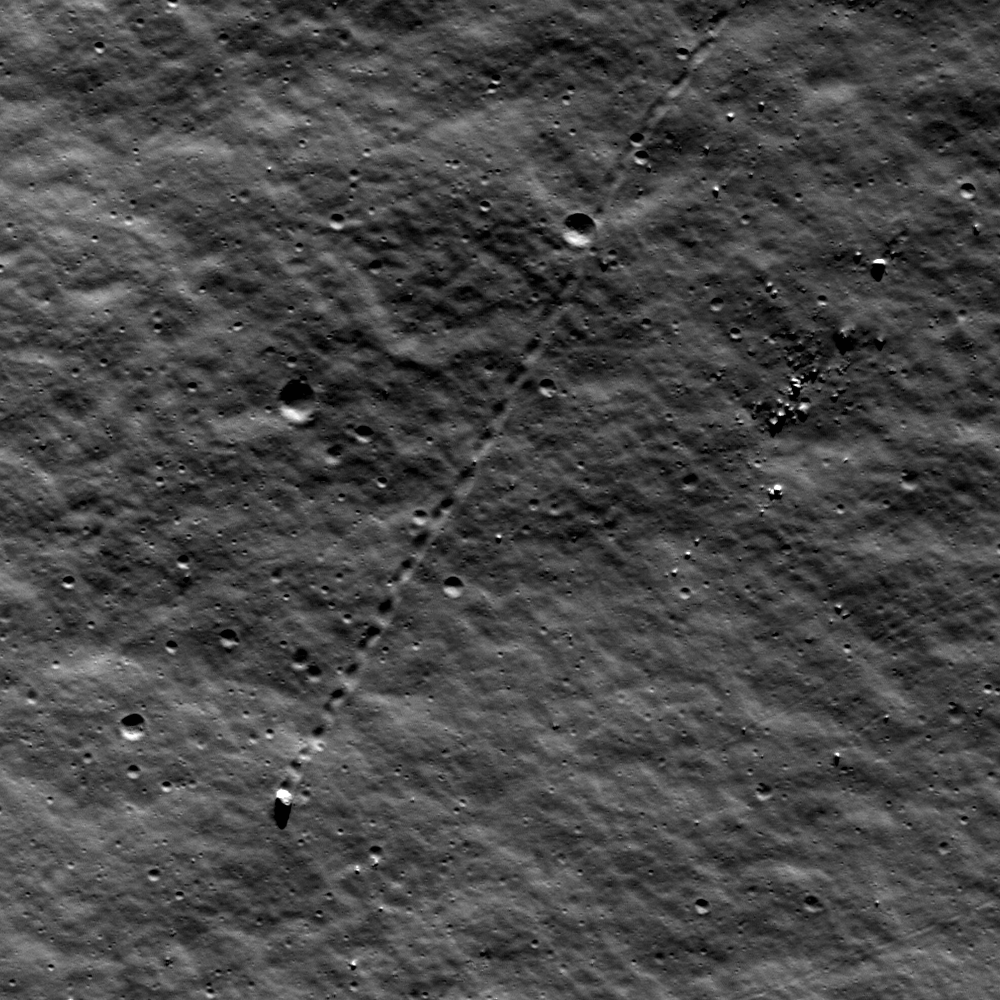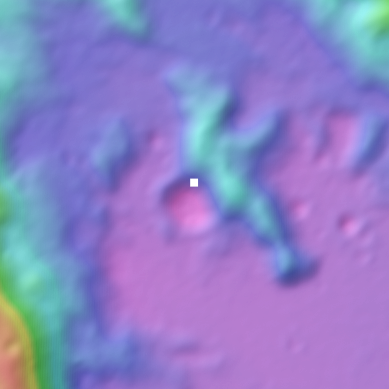
The lonely journey of this large boulder is apparent from its track in a sloping regolith surface. A casual glance might suggest that it happened last week, or even that its rolling might resume at any moment. However, closer inspection will detect a few craters that clearly superpose and therefore post-date the track, showing that this 9-meter diameter boulder stopped rolling some time ago. Impacts are used in this way to provide a relative sense for the timing of events on planetary surfaces across the solar system. The procedure assumes a steady flux of impacting bodies in each size range, with smaller impacts being much more frequent than large impacts.
Though long ago to humans, however, this boulder's journey was made in geologically recent times. Studies suggest that regolith development from micrometeorite impacts will erase tracks like these over time intervals of tens of millions of years. If rate estimates are accurate, this boulder track might not be older than 50-100 million years. Eventually its track will be erased completely. What might have caused the rock to roll so recently? Perhaps this boulder was sent on its way by ground-shaking caused by the violence of a nearby impact. Perhaps a direct hit by a small meteoroid did the job.
The color WAC Digital Elevation Model (DEM; also known as a Digital Terrain Model (DTM)) of the area shown below gives a sense for topographic relief unavailable in the WAC mosaic alone. Red-orange is high and lavender is low in elevation. The sharp transitions in color indicate steep slopes, with nearly constant colors indicating more gradual slopes. We can see that the location of today's Featured Image is in a zone of relatively gradual slope, just beyond the steeper slopes of the Schiller central peak complex. Thus it is unlikely that our boulder will continue rolling anytime soon, as its arrived in an area with too gentle a slope.
Look for other boulder tracks in the full NAC image. Access to the LROC global WAC DEM is available here. Additional examples of boulder migrations can be seen in A Gathering in Lacus Mortis, Sampling Schrödinger, and Frozen in Time.
Published by James Ashley on 7 February 2012

